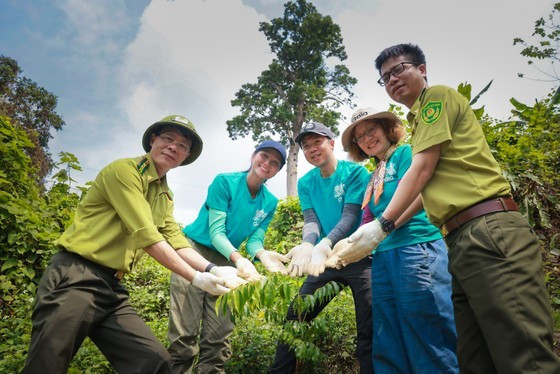 |
|
Growing forests not only protects the environment but also creates a source of raw materials for the wood processing industry for export. |
According to data from the Department of Forestry (VNFOREST), Vietnam currently has a total forest area of approximately 14.74 million hectares, with planted forests making up 31 percent and natural forests constituting the remaining 69 percent. The objective for the year 2025 is to attain an export value of US$18-20 billion for the forestry sector and to reach $23-25 billion by 2030.
Currently, there are over 6,000 forestry export companies operating across the country, and the major enterprises are mainly clustered in Ho Chi Minh City, Dong Nai, and Binh Duong. Previously, raw materials had to be imported from other countries, but now, import volumes have decreased gradually thanks to the proactive cultivation of raw materials.
According to Mr. Vu Thanh Nam, Head of the Forest Utilization Department of the VNFOREST under the Ministry of Agriculture and Rural Development, Vietnam’s forested area has been rapidly expanding in recent times thanks to effective land allocation and forest management. Forests not only have proprietors but also facilitate forest growers in consuming the products they cultivate, thus aiding in reaching the designated forest cover objectives.
To date, Vietnam has roughly 4 million hectares of production forests, yielding approximately 20 million cubic meters of wood, primarily focused on cultivating various species like acacia, eucalyptus, cinnamon, and pine.
Nonetheless, according to forestry experts, to enhance export value, investment in large-timber forests is required. Mr. Vu Thanh Nam assessed, "The superior performance of large timber forests in comparison to small ones has been acknowledged, but the development of this forest type has not yet been commensurate."
According to statistics, within the 4 million hectares of production forests, there are around 1 million hectares of large-timber forests, with households and individuals responsible for over 60 percent of these forests. Among these, 440,000 hectares, comprising over 10 percent of the total planted production forest area, are over ten years old.
According to Mr. Nam, the most significant current challenge is that growing large-timber forests takes a long time, while people need to generate income early for reinvestment.
The country has implemented a policy that offers VND8 million per hectare to assist those engaged in large-timber forest cultivation.
The Ministry of Agriculture and Rural Development has submitted a range of policies to the Government, including one aimed at providing loans for individuals engaged in large-timber forestry. At present, the Ministry is devising a dedicated plan for large-timber forest cultivation from 2023 to 2030, with expectations for approval later this year.
Source: SGGP